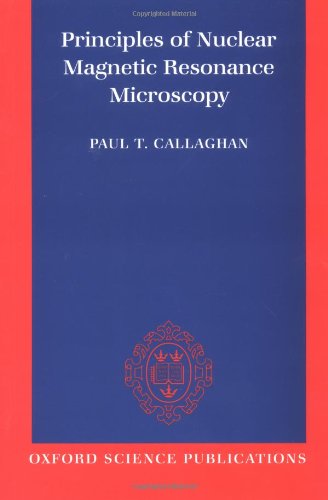Principles of Nuclear Magnetic Resonance Microscopy ebook
Par hendrix willie le jeudi, septembre 3 2015, 21:41 - Lien permanent
Principles of Nuclear Magnetic Resonance Microscopy. Paul Callaghan

Principles.of.Nuclear.Magnetic.Resonance.Microscopy.pdf
ISBN: 0198539444,9780198539445 | 512 pages | 13 Mb

Principles of Nuclear Magnetic Resonance Microscopy Paul Callaghan
Publisher: Oxford University Press, USA
Keywords: collaboration; software; protein crystallography. The CCP4 model has inspired similar developments in NMR, and it is hoped that the biological XAS community may pursue similar collaboration. (1994) Principles of Nuclear Magnetic Resonance Microscopy, Oxford University Press. The basic principles are otherwise similar. Google book Principles of Magnetic Resonance. NMR phenomena instead of nuclei. We review recent efforts to detect small numbers of nuclear spins using magnetic resonance force microscopy. Magnetic resonance microscopy: recent advances and applications. As a structural tool, it always seems to play second fiddle to crystallography, and not many people seem to know about all of the different types of information that NMR can give you. H NMR metabolic profiling was performed to distinguish the water extracts of P. Therefore, state-of-the-art software can be made available to Similar initiatives are underway for NMR and electron microscopy. Ginseng cultivated in Hebei and Jilin of China, both of which were distinguished from extracts of P. Principles of Nuclear Magnetic Resonance Microscopy. The high information content of modern multi-dimensional Although the hyperpolarization strategies differ in their underlying physico-chemical principles they have a number of problems in common. Force-detected nuclear magnetic resonance: recent advances and future challenges. The resulting response to the perturbing magnetic field is the phenomenon that is exploited in NMR spectroscopy and magnetic resonance imaging, which use very powerful applied magnetic fields in order to achieve high resolution spectra, details of which are described by the chemical shift and the Zeeman effect. Nuclear Magnetic Resonance (NMR) spectroscopy, microscopy and imaging techniques (MRI) play a crucial role in numerous fields of science ranging from physics, chemistry, material sciences, biology to medicine. So why does NMR get such a bad rap? In principle, a program in any language can be included in the suite with very few changes. Optical-atomic magnetometers are based on a different principle – one that, curiously, is something like NMR in reverse, except that optical-atomic magnetometers measure whole atoms, not just nuclei. This era saw a step change in his research productivity and impact, culminating in his first book, 'Principles of Nuclear Magnetic Resonance Microscopy' in 1994. Principles of Nuclear Magnetic Resonance in One and Two Dimensions, Principles of Nuclear Magnetic Resonance Microscopy - Paul.
Learning OpenCV: Computer Vision with the OpenCV Library ebook download